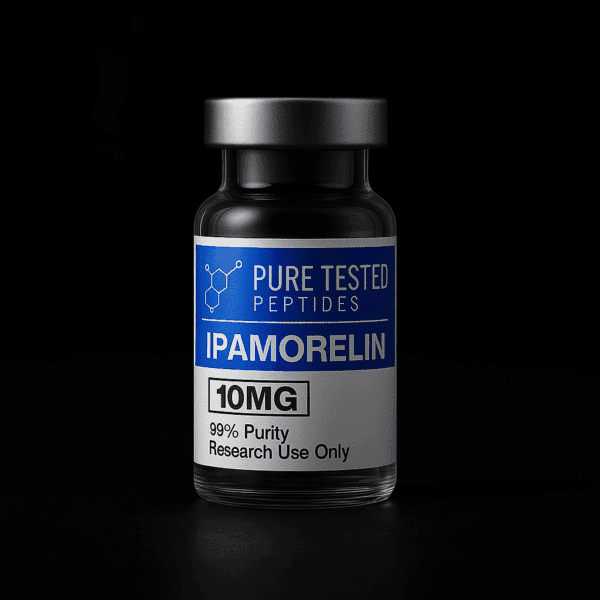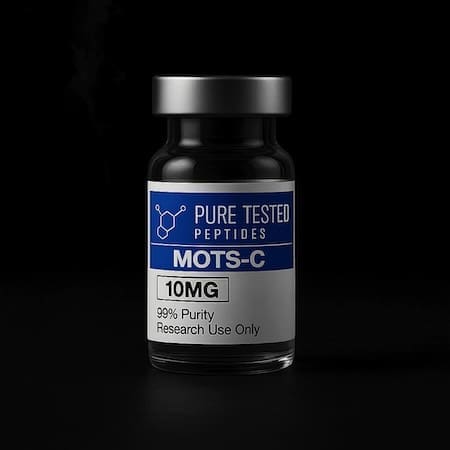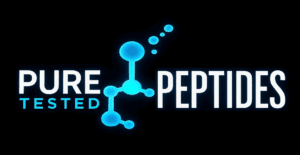Buy Peptides Online: Thymosin Alpha-1 (Tα1) Mechanism, Science, and Research Overview
Quick links:
MOTS-c 10 mg •
SLU-PP-332 •
All peptides for sale
What is Thymosin Alpha-1?
Thymosin alpha-1 (Tα1, thymalfasin) is a 28-amino-acid thymic peptide originally isolated in the late 1970s and studied as an endogenous regulator of immune function. Mechanistically, Tα1 is best described as a biological response modifier that tunes innate and adaptive immunity rather than simply “stimulating” it across the board. Literature consistently associates Tα1 with dendritic cell (DC) maturation, T-cell help (especially Th1 polarization), natural killer (NK) cell activity, and context-dependent modulation of inflammatory signaling.
Internationally, Tα1 has been used as an immune adjuvant and for select viral and oncologic contexts; mechanistic and clinical discussions emphasize its role in restoring immune homeostasis rather than driving unchecked activation. (Regulatory status differs by country; researchers should consult local regulations.)
Core Mechanisms and Pathways
1) Dendritic cell maturation and antigen presentation
Multiple studies show that Tα1 promotes differentiation and functional maturation of human and murine dendritic cells. Consequences include increased IL-12 expression, improved antigen presentation, and more effective priming of Th1 responses. These effects have been mapped to p38 MAPK/NF-κB signaling and to toll-like receptor (TLR) pathways.
2) TLR-dependent innate immune tuning
Tα1 interfaces with pattern-recognition signaling—particularly TLR9 on plasmacytoid DCs—activating MyD88-IRF7 signaling and promoting type-I interferon programs that bias toward antiviral and Th1-skewed immunity.
3) IDO, tolerogenic balance, and context dependence
An important nuance is Tα1’s capacity to induce indoleamine-2,3-dioxygenase (IDO) in DCs under certain cues, generating regulatory T-cell–supportive contexts and mitigating excessive inflammation. This duality—enhancing defense while preventing runaway inflammation—underlies Tα1’s “immune-balancing” reputation.
4) T-cell/NK-cell functional support and MHC-I upregulation
Tα1 exposure has been linked to enhanced T-cell and NK-cell effector profiles and upregulation of MHC-I on target cells, mechanistically consistent with improved antigen processing and cytotoxic targeting in experimental settings.
Selected Evidence Themes (Research-Only)
Host defense and infectious disease contexts. Reviews and experimental studies describe Tα1 as an immune adjuvant that enhances vaccine responses and supports antiviral programs, with a literature base in hepatitis B/C and other viral settings. Recent analyses continue to explore clinical contexts while emphasizing heterogeneity of study designs and endpoints.
Oncology and tumor microenvironment. In tumor-immunity models, Tα1 has been observed to promote DC maturation, Th1 bias, and to reverse pro-tumor macrophage polarization under specific conditions, thereby enhancing antitumor immune tone in preclinical systems.
Inflammation and immune homeostasis. A continuing theme is restoration of balanced immunity—reducing immunoparalysis while avoiding hyperinflammation. Systematic and narrative reviews note immune-subset improvements and context-dependent anti-inflammatory effects; emerging meta-analyses remain cautious about generalizing results across populations.
Research-only note: Findings above derive from a mixture of in vitro, animal, and human studies with varying endpoints. They should be interpreted as hypothesis-generating and mechanistic, not as evidence of therapeutic efficacy.
Pathway Map: How Tα1 “Balances” Immunity
Putting the mechanisms together, a simplified pathway reads:
(1) Tα1 engages DC pattern-recognition signaling (e.g., TLR9 → MyD88 → IRF7) leading to type-I IFN programs;
(2) DCs upregulate IL-12 and costimulatory molecules, promoting Th1 differentiation and cytotoxic responses;
(3) NK-cell activity and antigen presentation (MHC-I) are supported;
(4) under specific cues, Tα1 can induce IDO in DCs and promote regulatory circuits, guarding against overshoot. Taken together, Tα1 functions as a context-sensitive calibrator of host defense.
Popular Research Peptides
Ipamorelin 10mg

MOTS-c 10mg

SLU-PP-332

While mechanistically distinct from Thymosin Alpha-1, these compounds are often explored in adjacent research domains:
Ipamorelin for growth hormone axis support, MOTS-c for mitochondrial signaling, and SLU-PP-332 for metabolic gene expression.
Explore all peptides for sale online at PureTestedPeptides.com.
Design Considerations for Experimental Models
Model selection. Because Tα1’s effects depend on baseline immune tone, studies frequently use models with defined immune stressors—e.g., viral pattern recognition, fungal challenge, or post-transplant immunosuppression—to reveal signal-to-noise in outcomes such as DC cytokines, T-cell priming, or NK activity.
Endpoints. Mechanistic readouts commonly include DC surface markers and IL-12, IRF7-linked transcripts, type-I IFN signatures, T-cell polarization, NK cytotoxicity, MHC-I expression on targets, and, in tolerance models, IDO activity and Treg markers.
Adjacency to metabolic and mitochondrial axes. Although Tα1 is not a metabolic peptide, immune function is metabolically gated. Researchers sometimes layer Tα1-centric experiments with mitochondrial or metabolic probes (e.g., MOTS-c; ERR agonists like SLU-PP-332) to map crosstalk between immune tone and cellular energetics.
For a broader catalog of research compounds, see Buy peptides online — full catalog.
Highlights from Reviews and Recent Papers
- Comprehensive reviews describe Tα1 as an endogenous immunomodulator that can enhance cellular immunity, support vaccine adjuvancy, and modulate inflammation in a context-dependent manner.
- Innate sensor coupling: Tα1 activates TLR-dependent programs (notably TLR9→MyD88→IRF7), linking pathogen sensing to type-I interferon and Th1 bias.
- Tolerance & regulation: Under specific cues, Tα1 induces IDO in DCs, promoting regulatory feedback and preventing immunopathology.
- Oncology interface: Preclinical data show improved DC maturation and a shift away from immunosuppressive M2 macrophage states in certain settings.
- Clinical exploration continues: Ongoing and recent work includes infectious-disease and immune-dysregulation contexts, emphasizing controlled, indication-specific trials.
Key Takeaways (Research-Only)
Thymosin alpha-1 occupies a distinctive niche: a small peptide that “translates” innate cues into appropriately scaled adaptive responses. By tuning DC function, interfacing with TLR signaling, promoting Th1 programs and cytotoxic capacity—while also retaining the ability to induce IDO and restrain overshoot—Tα1 exemplifies immune calibration. This mechanistic profile explains its long-standing interest across infectious-disease, oncology, vaccine-adjuvant, and immune-homeostasis research programs.
Compliance reminder: All compounds referenced on PureTestedPeptides.com are sold strictly for research, laboratory, or analytical use only—not for human consumption or clinical use.
